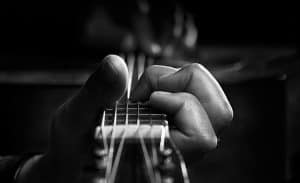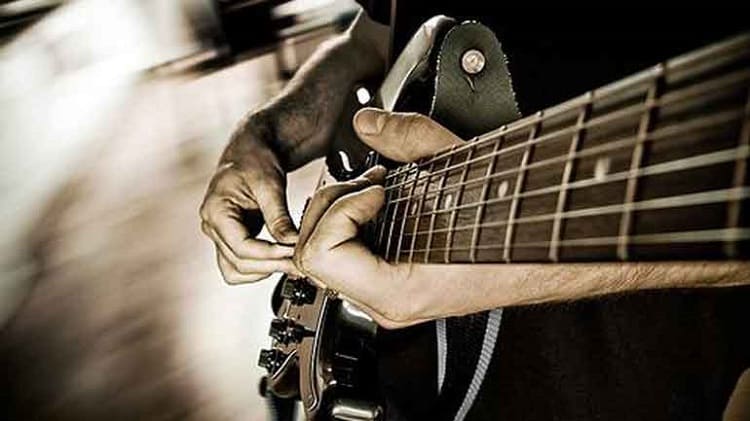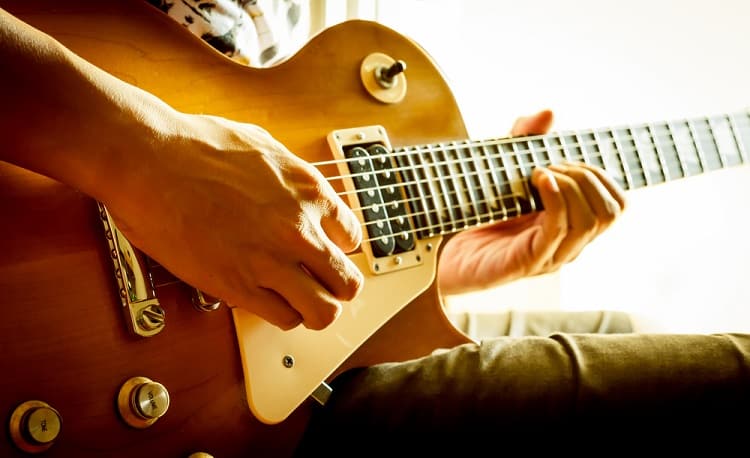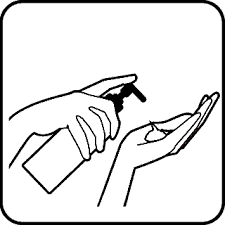 Toughened part of the skin that is with time increasingly becoming thicker and harder in response to constant, irritation, friction, pressure is called the callus.
Toughened part of the skin that is with time increasingly becoming thicker and harder in response to constant, irritation, friction, pressure is called the callus.
So, just like the feet calluses appear when your footwear don’t fit nicely, so does normal fretting of steel guitar strings help to create calluses on the unprotected fingertips.
They are built somewhat gradually, and over a greater period of time, and also with greater commitment. They really help to wildly increase your playing pleasure by gradually desensitizing your fingertips to bigger pain, and then you are able to play much better and longer.
Ways to build calluses
The most secure way to acquire calluses is with the help of the old-fashioned and relentless practice. The kinds of practice that are mentioned here, however, aren’t playing for two or three, or four hours straight, and ceasing it to do it again for days.
Because, if you try to practice for a few or more hours a day if you are a beginner, then there is a possibility for you to catch a blister, and a blister is not a beginning of the callus.
 Blisters and cuts disable you to play and heal slowly too, and that is why you really don’t need to overdo it. It is wisest to play in shorter time-spans, four or five times daily, and in every day of the week.
Blisters and cuts disable you to play and heal slowly too, and that is why you really don’t need to overdo it. It is wisest to play in shorter time-spans, four or five times daily, and in every day of the week.
The real difference between those pretenders and the players is a callus. They are truly your proudly owned battle scars and your real medal of honor. Well, the most reliable way to build them is not only through guitar practice, but also trough other kinds of hard work.
 Firstly your fingertips can hurt a little. But, again, it’s the secure way to build them. Also, you can truly expect a great decrease in sensitivity of the fingertips. So, if you really continue to play without greater stops, you’ll truly maintain your own calluses and you’ll really never need to think about problematic sores on the fingers anymore.
Firstly your fingertips can hurt a little. But, again, it’s the secure way to build them. Also, you can truly expect a great decrease in sensitivity of the fingertips. So, if you really continue to play without greater stops, you’ll truly maintain your own calluses and you’ll really never need to think about problematic sores on the fingers anymore.
What do do?
Here are some other hints to help you with calluses. Be aware that these hints are useful to develop thick, nice calluses, but nothing can really substitute for true playing. It is wise to keep the nails fully trimmed.
Because it’s really far easier to create them with [su_highlight background=”#fdffed”]short nails[/su_highlight]. Long nails are bad, they make it really hard to acquire calluses, and they also block the possibility of creating the nice tone as well.
Get the decent strings. They are always available in a great variety of different gauges. So, light ones are far easier to practice with than some medium or very heavy gauge strings, and also they’ll cause much less problematic finger soreness.
Heavy gauge ones will always initially hurt far more, but, on the other side, they will give help you to build some fine, thick calluses very quickly.
 Increase the playability of your guitar. Great action on an instrument refers to some space that is between the strings and the guitar’s fretboard. That means the strings on some very high action guitar are a way higher off the instrument’s fretboard than those on a low action instrument.
Increase the playability of your guitar. Great action on an instrument refers to some space that is between the strings and the guitar’s fretboard. That means the strings on some very high action guitar are a way higher off the instrument’s fretboard than those on a low action instrument.
What to evade?

Water makes your skin softer, so this means that you must put latex gloves if you do some dishwashing. Of course, you must less expose your finger to moisture and water when you wash your hands and hair, take a shower, etc. So, don’t put your hands and fingers in wet spaces for long.

Don’t play immediately after your contact with water. Also, don’t practice until your fingers have fully dried and also toughened up once more, and this mostly takes around an hour or two.
Remember, don’t use those hand moisturizers because if hands are truly dry, don’t expose your calluses to it. Lastly, don’t use super glues on the fingertips.
Conclusion
The greater the action the larger is the force that is always required for pressing of the guitar strings, and, happily, really all guitar’s actions are able to be firmly adjusted.
So, take your guitar to your nearest useful music shop. Then ask people who work there to check that guitar action, and high action will be a better option. Well, I think that this text will probably help you a lot.
